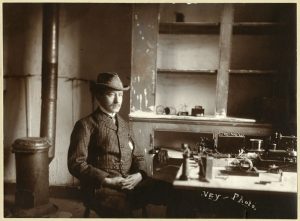July 18, 1850

Basilica 1841
On July 18, 1850 Bishop Michael Anthony Fleming who was responsible for building the Roman Catholic Cathedral (now the Basilica) in the town of St. John’s was buried in the crypt of the new Cathedral.
The newspaper of the day reported that an estimated 10,000 people lined to streets to bow their heads in respect as the funeral procession passed through the streets. Having circled the town, the procession returned to the Cathedral that was still under construction, where after some concluding prayers, the coffin was enclosed in an oaken shell, lined with lead and interred in the vault under the main altar where it rests to this day.
Fleming’s greatest domestic projects were:
The recruiting of two orders of Irish religious women (the Presentation Congregation and the Sisters of Mercy) to work as teachers.
The construction of the Cathedral (now Basilica) it was the largest building project in 19th century Newfoundland and is now the definitive icon of Newfoundland Catholicism.
During the winter of 1835 Fleming lived in a fishing room at Petty Harbour, administering smallpox vaccine to the whole community of Catholics and Anglicans, and remaining in quarantine with them when no physician or other clergyman would go there.
Fleming was instrumental in enforcing the Emancipation Act for Irish Catholics in Newfoundland in 1832.
The legend of the ‘Pink, White and Green’

The Pink, White and Green
In popular “legend”, Fleming is credited with creating the “Pink, white and green” tricolour flag of Newfoundland. It is told that during annual wood hauls for the Anglican cathedral and Roman Catholic cathedral, considerable rivalry developed between the two groups involved. The Protestant English marked their wood piles with the pink flag of the Natives’ Society, while the Catholic Irish used green banners. The threat of violence was such that Bishop Fleming intervened, and persuaded them to adopt a common flag, on which the pink and green would be separated by a white stripe to symbolize peace. The pink symbolized the Tudor Rose of England (The Protestants) and the Green symbolized St. Patrick’s Emblem of Ireland (The Catholics). The White is taken from St. Andrew’s Cross (St. Andrew is the Patron Saint of Fishermen and Scotland). This legend, it’s symbolism and origins, have all been disproven by historical evidence. In reality, the Newfoundland “pink, white and green” tricolour didn’t appear until at least 41 years after the inception of the Irish tricolour and was almost certainly based on the Irish flag.
The legend of the Basilica Land
There is “legend’, that the exact amount of land allowed for the basilica cathedral to be built was to be determined by how much land the parishioners could fence in one day. This gave rise to the story that hundreds of Catholics showed up offering help with picks and shovels. In actual fact, the land acreage had been clearly defined in the terms of agreement.
Person of Canadian National Historic Significance
On 9 September 2005, the 150th anniversary of the consecration of Fleming’s cathedral, a plaque was unveiled by the Historic Sites and Monuments Board of Canada designating Bishop Fleming as a person of Canadian National Historic Significance.
Recommended Reading: Fire Upon the Earth, the Life and Times of Bishop Michael Anthony Fleming, by J.B. Darcy, C.F.C. Creative Publishers, 2003.
Recommended Archival Collection: Explore MG 250 at the Rooms Provincial Archives Division. The collection consists of correspondence, speeches and sermons of Bishop Fleming, 1838-1845.
Recommended Tour: Join Paul Rowe in his special Tour and Play “Fleming” One Man’s Journey to Build the Basilica and Unite a Nation. Time: Tuesday – Saturday at Noon from July 5 – August 27 . All Welcome: $12 Admission; $10 Students and Seniors. Cash Only Please. Tickets Available 30 Minutes Before Showing.





